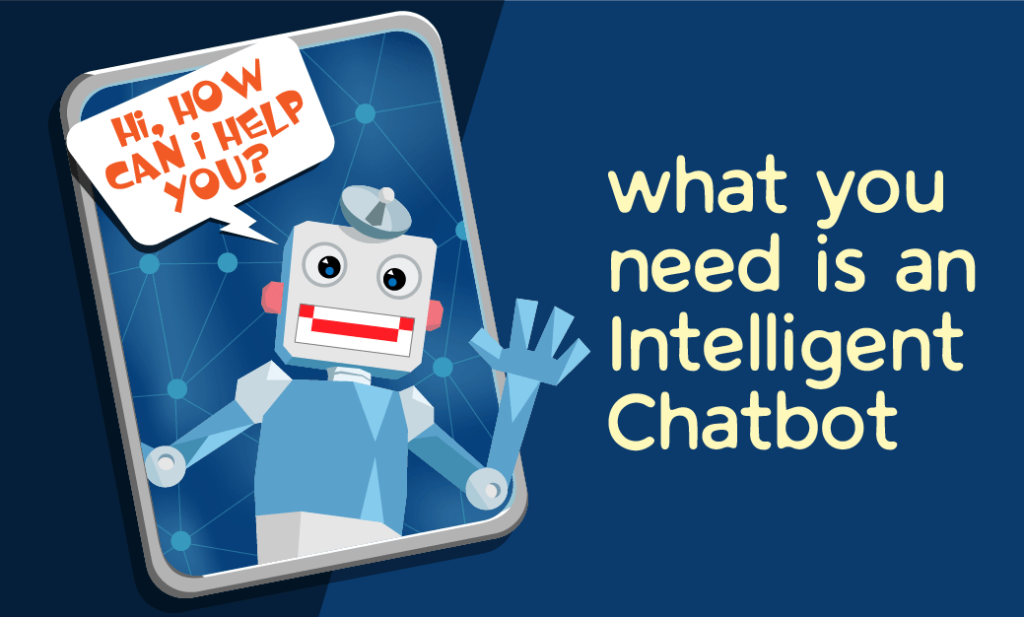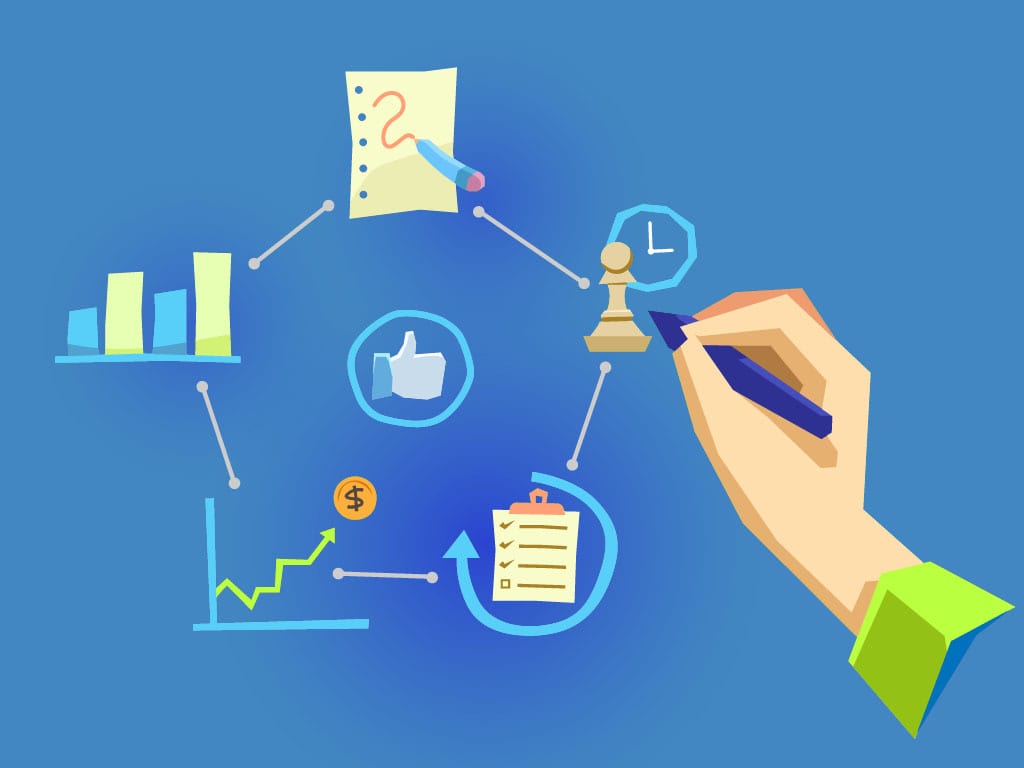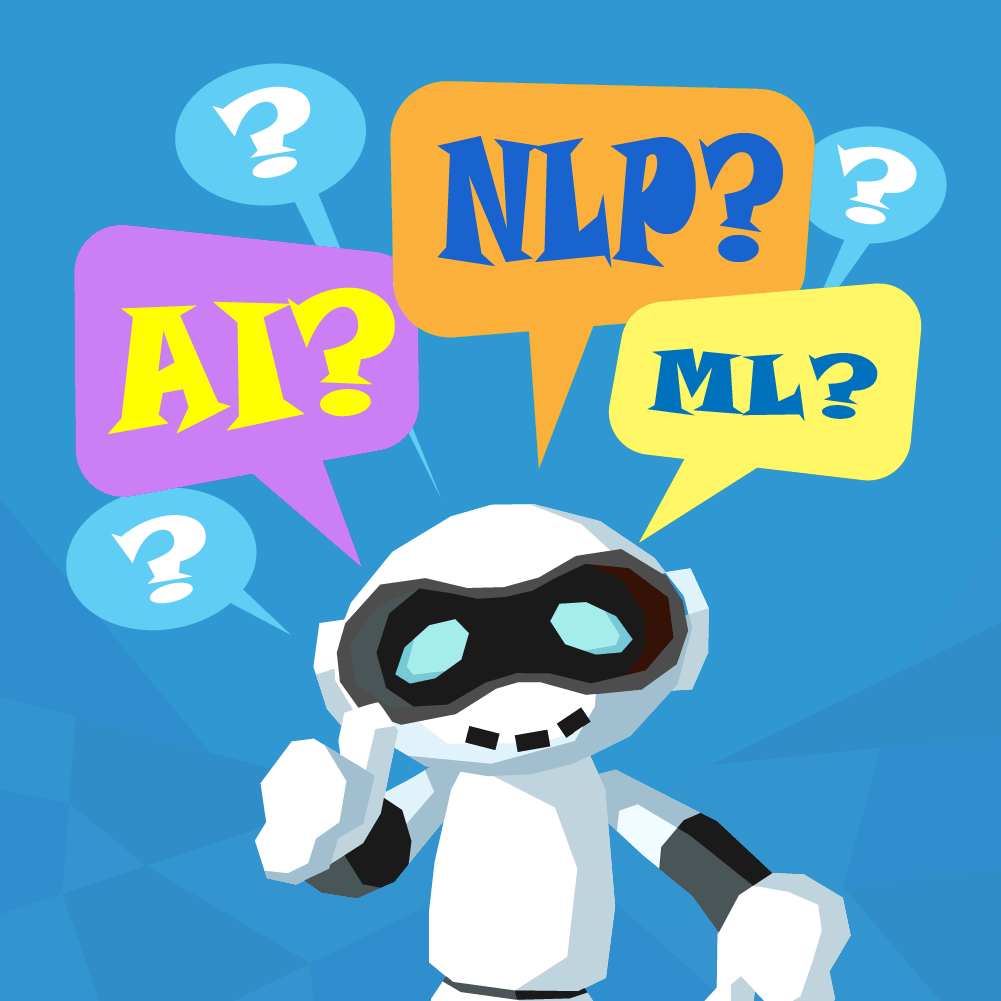What Are the Components of an Intelligent Chatbot?

The modern digital revolution – along with globalization – has been at the forefront of many corporate changes around the world, ultimately shaping how enterprises operate and how brands interact with their customers. One of the most significant “game-changing” technologies being leveraged by SMEs and larger corporations alike is that of hardware and software robotic systems. Robots, or “bots,” have helped to radically alter how businesses operate by streamlining and automating operations, processes and workflows, as well as enhancing the customer’s overall experience. Regarding software robotic systems, a specific class of text and voice-assistant robot systems, Chatbots, have become a core technology for more efficient business interactions by reducing overhead and allowing customers to efficiently and quickly have their issues/questions resolved by bot systems. By 2020, the expert opinion is that 85 percent of customer interactions with their favorite brand, will be handled by a bot. Additionally, according to VentureBeat in 2016, over 30,000 chatbots were released by different brands [1]. It is clear that the utilization of chatbots (being added to different enterprises’ marketing, sales and customer service stacks) is increasing, and will continue to increase into the future.
While chatbots are not a completely new technology – the first chatbot, “Eliza,” was built in 1960 by MIT – advancements in Artificial Intelligence (AI) have allowed chatbots to leverage advanced “intelligence” to assist – and in some cases, replace – humans for customer service interactions, troubleshooting processes, and for answering questions, and forwarding customers to CS representatives, as needed. Historically, chatbots have evolved along a path of four different modes, which have correlated with advancements in AI and automation programming:
- Connector bot: Human-to-human interactions were historically replaced with a basic bot whose sole purpose was to connect the customer with the correct customer service rep via a single question. This bot lacked true “intellect” and was simply used by brands to re-route calls in the most efficient manner possible.
- Intelligent Switchboard bot: Automation of re-routing workflows were enhanced with a switchboard bot that was able to ask multiple questions to effectively resolve a customer’s inquiries and/or route the call to the appropriate department.
- Intelligent chatbot: The precursor of the modern chatbot, this chatbot was able to fully resolve most customer issues and questions, while having enough intelligence to re-route the call to the pertinent representative if needed. With this chatbot, an entire call could take place strictly between a human and a computer system, though customer service reps were nearby to aid with questions the bot might not be able to handle.
- Modern chatbot: The modern chatbot – at least in theory -utilizes AI, machine learning and deep learning to handle customer inquiries entirely on its own, without needing help from customer service reps. At this phase, human-to-human interactions have been fully replaced with human-to-computer interactions. To be fully effective and to offer a personalized experience to customers, chatbots use cognitive computing APIs linked with advanced AI/ML algorithms and predictive analytics, which can analyze unstructured data to give the chatbot the ability to learn from past experiences (with customers, i.e. understanding their needs and purchasing patterns).
While some of the most well-known AI/chatbot assistant systems are Microsoft’s Cortana and Apple’s Siri, a very large number of businesses of all sizes have begun to integrate chatbots into their everyday business apps, and within social media/messaging apps, such as Slack and Facebook Messenger. According to a study from Comscore, 78 percent of smartphone users spend the majority of their app usage focused on three apps or fewer, with messaging apps being the most used apps (“App Download and Usage Statistics”) [2]. Since this is the case, messaging apps, such as Facebook Messenger, have become prime candidates for brands to integrate chatbots into their social media marketing and sales stack.
In order for chatbots to be leveraged correctly within these business and messaging apps, they must have human-like intelligence. The purpose of a chatbot is to understand the needs of a customer and aid them with their issue, which necessitates taking a desired action or answering a specific question. Thus, the chatbot needs to completely understand the needs of the customer, requiring a paradigm shift from explicitly programming applications (to serve human needs according to set guidelines), to allow programs to grow and learn while interacting with customers. A bot’s “intelligence” is a core part of its ability to aid human tasks and is based on advanced AI programming algorithms. Additionally, a new way to interface with computer systems is needed, which is where conversational UI comes into play. With voice interfaces, Natural Language Processing (NLP) is used to allow a bot to understand spoken, human languages. While AI is not a new realm of computer science, Machine Learning, and even more so, Deep Learning, are novel and advanced technological breakthroughs that – in conjunction with NLP – allow AI-based chatbots to learn, memorize, understand human needs, and reply with the appropriate response and action.
Ultimately, in order for chatbots to serve human needs in place of humans – which essentially starts with understanding a variety of human needs and knowing the pertinent response to resolve human issues – the chatbot needs to be intelligent and understand human languages and conversational flows, while having the four main traits of human intelligence: the ability to learn, the ability to collate and parse information (including utilizing memory), the ability to effectively communicate, and the ability to gain experience in specific situations in a way that results in taking the most effective action in the future. Additionally, as noted by Marutitech, a chatbot should be able to sense, have the ability to think with sharp and effective cognitive skills, and should be able to think quickly and respond accordingly.
Building Blocks to Creating a Functional Chabot
There are two main types of chatbots, encompassing a long history of increasing usage of AI, allowing Chatbots to assist humans with a greater number of tasks that require human-like intelligence:
- Close Domain, Retrieval-based: Close domain entails a system that has a limited input and output spectrum (with regard to the conversational theme and goal), allowing for more linear and simpler conversations that a chatbot will be able to understand. This typically is associated with structured conversations. Additionally, the chatbot responds according to a strict set of rules (retrieving the rules/parameters in order to respond).
- Open Domain: Open domain can encompass a variety of topics, themes and goals, requiring the chatbot to acquire great cognitive skills to understand the ultimate desires of the customer among a number of requests, queries and/or questions within the conversation. This is typically associated with unstructured conversations.
Open Domain chatbots, which fully act with human-like intellect, are the most difficult to construct and develop due to the intricacies and complexities of human intelligence. However, there are many examples of advanced, modern chatbots that require a great amount of human-like intelligence to assist humans in everyday tasks. As noted by Yale, “recent examples of this explosion of AI-assisted chatbots include a professor at Georgia Tech building a chatbot teaching assistant, named Jill Watson. To relieve loneliness and bring some emotional support there are Replika and Woebot, which provide behavioral therapy exercises, supportive texts and links. Ellie helps military doctors to detect post-traumatic stress disorder, depression, and other mental illnesses in war veterans. There are AI chatbots that help in handling human resources with employee onboarding, in fintech and myriad other ways” (“How intelligent chatbots are easing human burdens”) [3]. In order for these AI-based chatbots to effectively be leveraged, they must be able to recognize images, speech/voice commands, emotion, and have the ability to learn, memorize information, retrieve information, alter future behavior, respond in a pertinent way, and express emotions.
Image, Speech, Emotion Recognition
There are three major ways chatbots need recognition skills to effectively gain human-like intellect and allow it to operate like a human:
- Image recognition: Utilizing computer vision, computer systems are able to understand what is seen via sensors, such as IR (infrared) or camera peripherals. This allows the inputted data associated with “seeing” an image to be understood by a program – such as an AI bot – based on parsing said data and retrieving data from its “memory.” Image recognition is required for bots to be human-like, just like a human needs to see in order to function 100 percent in the world.
- Speech recognition: Similar to image recognition, computer systems have to be explicitly developed to fully understand human speech, without the use of computer-based syntax/commands. This is where NLP comes into play, using complex development processes that enable a bot to understand structured and unstructured conversations and conversational flow. A bot needs speech recognition in order to both understand what is heard (via human speech) and to reply accordingly.
- Emotion recognition: Certain Chatbots may need to recognize human emotions to aid humans in specific tasks. Additionally, in order for a bot to replicate human behavior, it would need to display, understand, and analyze human emotions, including anger, fear, love, etc. For instance, a bot that aids the police with stopping crimes may need to analyze the emotions of suspects – in conjunction with image recognition and facial expression recognition – to carry out its tasks.
Designed to model the human brain, an AI’s cyber-brain is developed using the principles of AI-neural networks. While the human brain has a circuit-like network of neurons to form areas associated with cognition, emotion, instinct, and memory, the “brain” of AI-bots is made up of code that encompass certain aspects of the program’s human-like functionality. The computer vision aspect associated with image recognition parallels a human’s visual cortex, while the center/area of the human brain associated with speech parallels an AI-bot’s speech recognition center.
Self Learning Ability
One of the most significant aspects of AI-enabled chatbots is the utilization of machine learning and deep learning to allow bots to learn from data, alter their behavior based on experience, and to learn from experiences requiring the use of memory and effectively retrieving data and alter algorithms accordingly. As noted by Marutitech, “Information gathered and learned guides the chatbot to decide on the relevant action. Making decisions is more about what the chatbot has to reply to a user’s request. Predictive analytics using machine learning can make the AI chatbot plan ahead about queries that would come from the user. This can make the chatbot more intelligent” (“How to make an intelligent chatbot?”).
Consistency
To replicate human-intelligence, a bot must learn from data and experience, both of which require consistent data patterns. To be understood in a realistic manner (like a human would), the chatbot must display consistent behavior. Essentially, a chatbot must receive consistent inputs and output consistent responses/actions associated with the input. For example, if a bot is learning to recognize a human face, it will be impossible for the bot to learn if an image of a house is inconsistently shown along with the image of a human. Bots learn in the same way that children learn, and thus such inconsistencies would lead to confusion and inefficient behavior.
Memory
Any AI-based bot that mimics human intellect must utilize a data-storage and data-parsing function that mimics the human hippocampus (the memory center of the human brain). This allows a bot to learn from its data, to retrieve data in an effective manner, and to learn from past experiences based on its “memory.” It is essentially impossible to learn if a system does not have a memory center, while a sharp memory is often associated with greater intelligence.
Ability to Express Emotions
A bot that mimics human beings must be able to understand, analyze, and exhibit human emotions, depending on the task for which the bot was developed. While displaying the full spectrum of human emotions may not be necessary, chatbots should be able to consistently understand a range of human emotions, and consistently output the pertinent emotion when it is necessary.
How Computer Scientists are Changing the Game
Computer Science is the realm of science associated with combining IT and scientific research for the development of more advanced, novel systems. Computer scientists have been a necessary component of the chatbot evolution phenomenon that has taken place over the last decade, not only due to advancements in AI research, but also due to advancements in computational linguistics.
Advancements to NLP and CI
Historically, the only way for humans to interact with computer systems was by inputting acceptable commands and utilizing the appropriate computer programming syntax. There have, however, been recent advancements that allow a human to interact with a robotic/computer system utilizing human speech (NLP) or text through a conversational interface (conversational UI) or hybrid interface. Such advancements allow humans to tell a computer or robotic system what to do, and to express what the end-user wants from the bot. With enough intelligence, the bot will be able to answer the request accordingly without needing direct aid/input from a human.
The Turing Test: Will Chatbot Ever Live Up to Alan’s Great Expectations
Developed in 1950 by renowned computer scientist, Alan Turing, the Turing test was a set of guidelines that would be used to “test” computer systems/AI for whether they could pass as a human being, based on their ability to communicate effectively (using only text-based methods), to exhibit cognitive intelligence and human-like behavior, and to act/react in the way that a human would, based on appropriate inputs.
The Imitation Game
Essentially, Alan Turing stipulated that a computer system could exhibit intelligent behavior parallel to a human, by imitating humans. He believed a human evaluator would need to test AI systems to ascertain whether the system was human-like or not, largely based on natural language conversations between a human and a machine (and limited to a keyboard/text-based communication interface), with a third party attempting to determine which party is human, and which is a machine. If the human is unable to distinguish the machine/AI from a human being, then the computer system has passed the test.
The $100,000 Contest
The Loebner Prize is one of the most popular applications of the Turing Test as applied to AI systems, which awards a grand prize of $100,000 USD and a gold medal to the maker of a computer system that is shown (via responses) to be indistinguishable from a human.
Controversy and Relevance
The Turing test is extremely relevant in today’s world of AI and the development of more advanced AI systems. It can be used to determine whether AI systems are human-like or not, and is already used in many AI-competitions. However, there are some controversies associated with whether the Turing test is truly relevant. Some argue that “imitating” a human doesn’t truly determine whether a computer system has human-like intellect (since certain animals are able to sufficiently imitate humans). The test is further controversial due to the number of computer experts who have claimed to have developed a system that has passed the test, which is often met with skepticism.
Some of Our Favorite Chatbot Examples
There are many popular chatbots that have been deployed by large enterprises, such as IBM’s Watson, Apple’s Siri, and Amazon’s Alexa. There are some lesser known bots as well, all of which utilize powerful AI algorithms that allow the chatbot to act and respond like a human.
Mitsuku
As a three-time winner of the Loebner Prize (Turing Test), the AIML technology-created chatbot, Mitsuku, is a conversational chatbot (chatterbot) that leverages powerful ML/data-retrieval analytics methodologies allowing it to reason like a human based on advanced analysis.
Cortana and Siri
As well-known AI chatbots and virtual assistant systems, Microsoft’s Cortana and Apple’s Siri are able to act like human-assistants and utilize powerful NLP algorithms to help end-users with everyday tasks.
Azuma Hikari
Created by Japanese tech company, Gatebox, AH is a virtual assistant (and hologram) built with Machine Learning algorithms that allow “her” to have advanced speech recognition, learn the end-user’s habits, and engage in advanced conversations as a chatterbot.
Xiaoice
As the “little sister” of Cortana, Microsoft’s Xiaoice is an advanced text-based NLP chatterbot, largely developed for Chinese audiences.
Zo
As a successor to the chatbot Tay, Microsoft’s Zo uses powerful algorithms to allow “her” to learn from input data, chat with users, and learn from experience. Zo is largely used in Kik (messaging app), and is somewhat controversial over its ability to learn “offensive behavior.”
Amazon Alexa
Amazon’s flagship AI/virtual assistant bot-system, Alexa uses powerful sensors (such as the initial smart speakers developed by Amazon Lab126) and can engage in advanced human-like conversation, provide information (e.g. weather readings, movie times, etc.), and acts as a central control hub for a variety of smart home peripherals.
Tips for Identifying Smart Chatbots
A chatbot must be competent in three major tasks (as noted by Marutitech) – sense, think, and act. For a chatbot to be considered intelligent, it must sense its external environment, including different types of recognition systems. Additionally, it must be able to parse information, utilize human-like cognition (i.e. to understand input data), and to react appropriately, that is, to act or respond.
Does the Chatbot Know What the User Wants?
The ultimate goal of any chatbot is to understand the desires of the user/customer. If this goal is met, the chatbot can take the desired action and/or give the appropriate response. If the goal is not met, it will be virtually impossible for the bot to operate in the manner for which it was developed. For the goal to be met, an effective communication UI must be developed, and the bot must be intelligent enough to understand human needs and human speech. Bottom line: intelligence is the most important factor for deploying a bot that operates efficiently and effectively.
Is the Chatbot Constantly Adapting?
Chatbots must be able to constantly adapt and evolve, as growth/learning is one of the most fundamental factors inherent to a bot offering a personalized experience to customers based on past experiences (and data). A static bot would not be an end-solution for human-to-computer interactions due to its innate inability to learn and grow. Thus, chatbots must be programmed via ML/DL methodologies to be fully dynamic computational applications.








